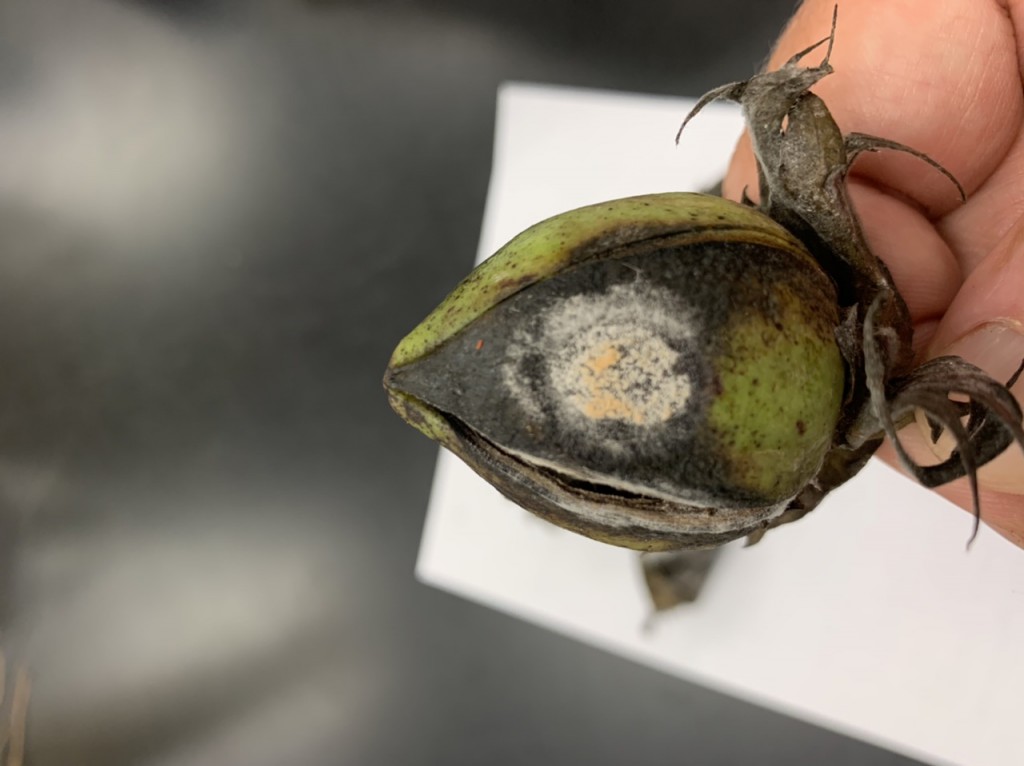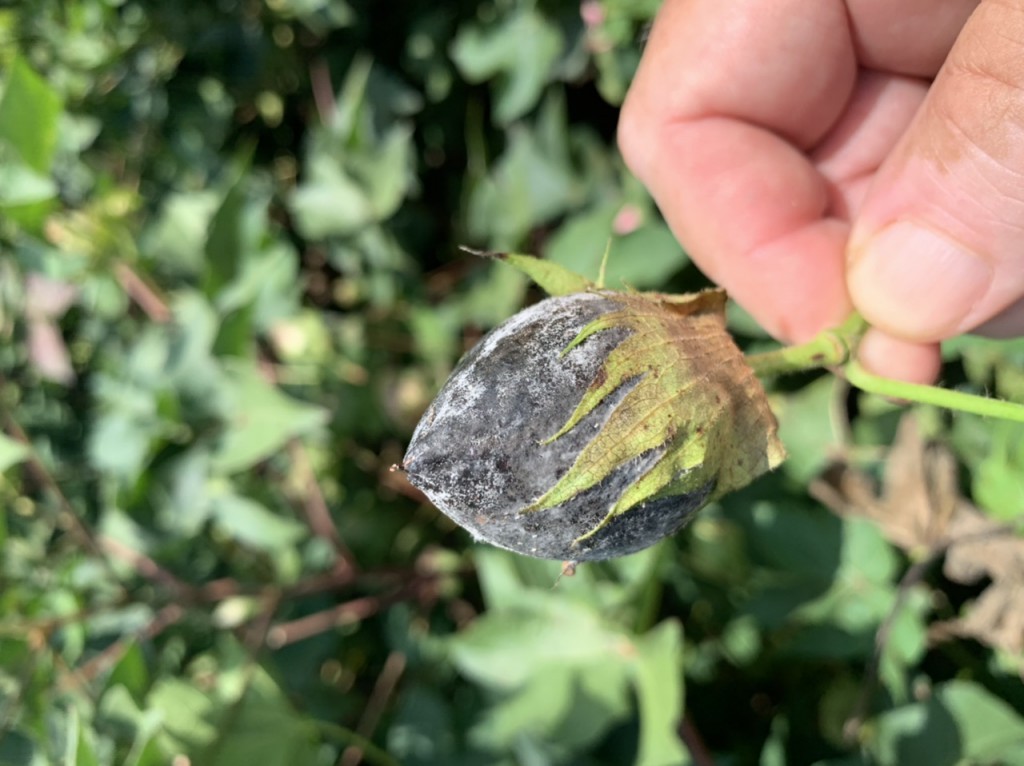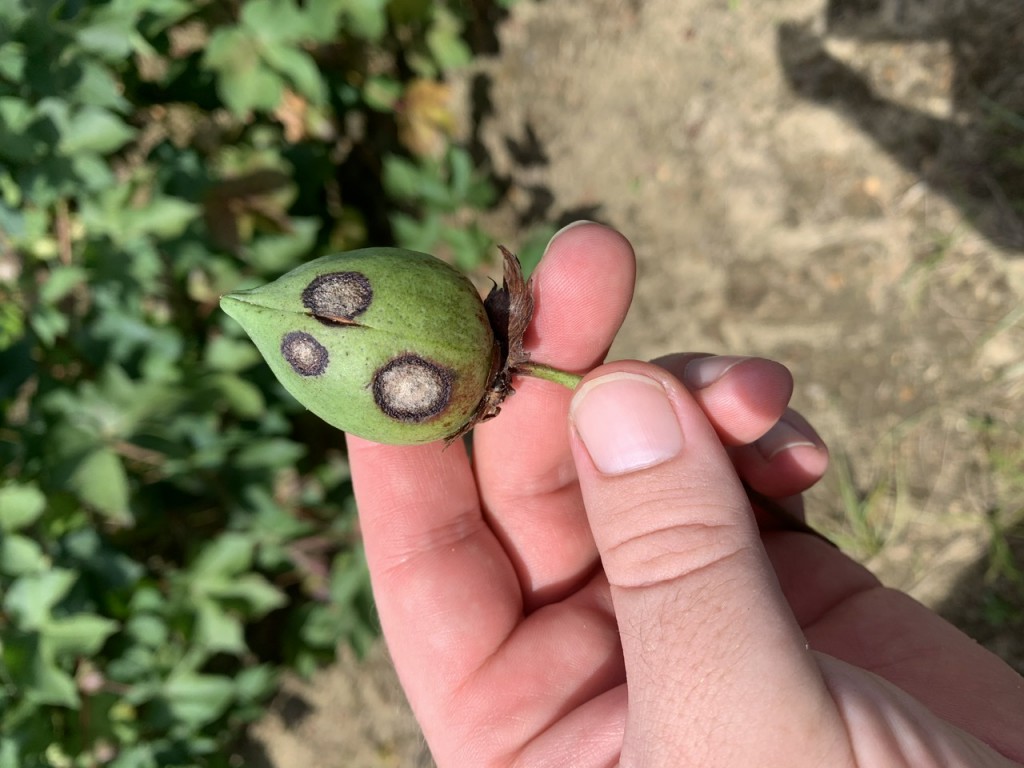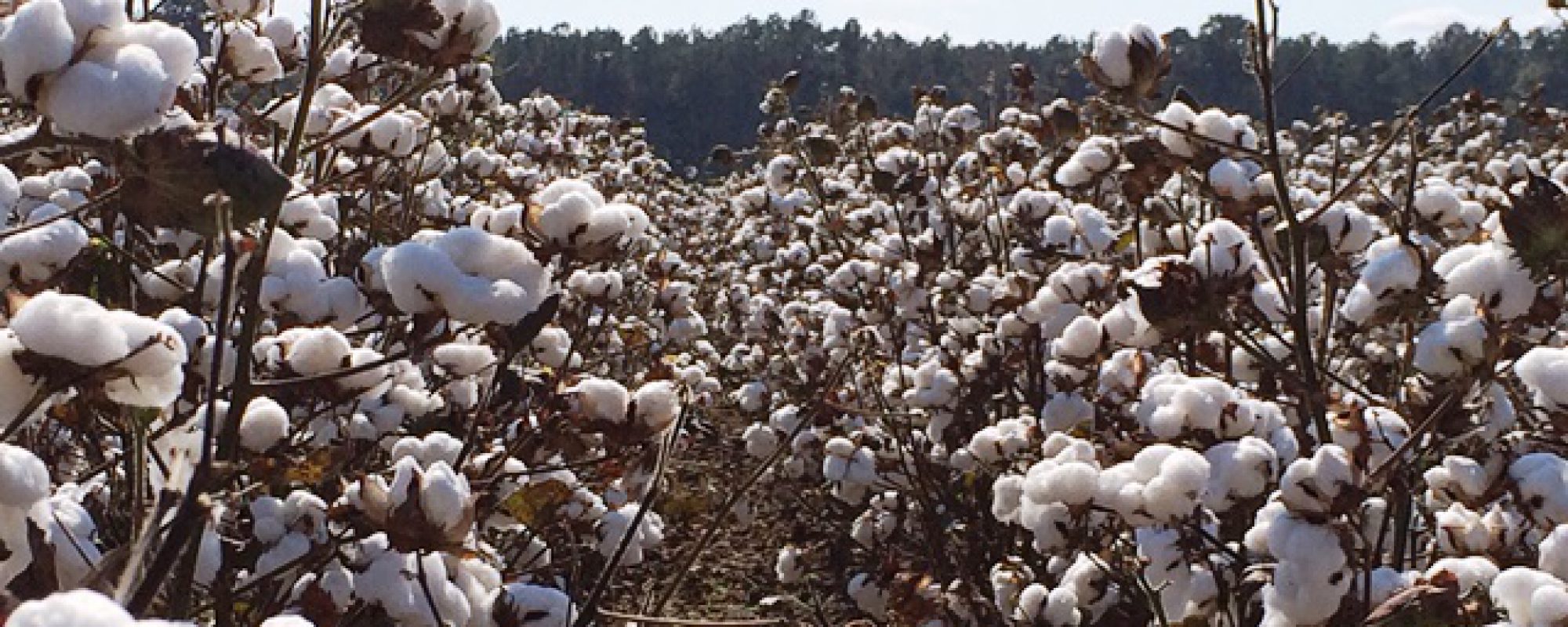With the hot and mostly dry weather throughout much of the season and now wet and humid conditions, it is becoming evident that the weather has been ideal for disease.
PEANUT: White mold is becoming more and more noticeable in many peanut fields in the county – the hot temperatures, high humidity and scattered rains have created near-perfect conditions for the development, spread and explosion of white mold. Be sure to stay on a good fungicide program, tightening spray intervals where disease is becoming problematic and/or where there is concern.
Also, be sure you are monitoring your crop for worms. Soybean loopers, cabbage loopers, armyworms and velvetbean caterpillars are building in numbers.
COTTON: Target spot, areolate mildew and Stemphylium leaf spot is showing up in cotton. Stemphylium leaf spot is becoming evident in many fields. Stemphylium leaf spot is caused by a deficiency in potassium in the plant. Fungicides are NOT a solution for Stemphylium leaf spot.
Areolate mildew and target spot is showing up in some fields throughout the county. At times these diseases appear late enough in the season that the defoliation resulting from these diseases does not affect yield and use of fungicides is not needed. The question for both diseases is not, “Can we protect the cotton in this field with a fungicide?” but rather, “Should we protect the cotton in this field with a fungicide?”
If areolate mildew or target spot is already well-established in the field (i.e. causing significant defoliation), then there is little hope that a fungicide will help. The three most important points to manage these diseases in cotton is the timing of the application, coverage and selection of fungicide.
Be sure you are still monitoring your cotton fields for worms, stink bugs and whiteflies. Hopefully, the showers will help keep the adult whiteflies beat down.
In summary, weather conditions remain nearly perfect for spread of all the BIG diseases – white mold, leaf spot and rust on peanuts, areolate mildew and target spot on cotton.
Dr. Bob Kemerait, Extension Plant Pathologist, made the following comment: We know that ALL of these diseases are active in Georgia at this very moment. And we know that fungicides can be valuable tools if 1) the disease is present or likely to be, 2) the diseases have not progressed too far already, 3) the crop has good yield potential, and 4) the crop has not yet reached or nearly reached a growth stage at which the impact of the disease on the crop is negligible and not worth spraying.
FYI – Peanut rust has been identified in Southwest Georgia, so keep a look out for it especially if we continue to get showers. Also, Colletotrichum boll rot (Figure 1) and Diplodia boll rot (Figure 2) is showing up pretty bad in some cotton fields in Southwest Georgia and it to can worsen if the weather remains wet. The bad thing about both boll rots is that there is no fungicide treatment to control them. Dr. Kemerait’s key points about this boll rot issue is listed: 1) Primarily two fungal boll rots affecting cotton crop – Colletotrichum and Diplodia. 2) Lower bolls are often affected first because of their age (longer exposure to damage and cracking) and humidity in the canopy. 3) The seemingly sudden onset is associated with increased rainfall recently. 4) The situation will likely affect Southeast Georgia soon enough. 5) There is nothing to spray to protect the bolls. 6) There is a little bacterial boll rot (Figure 3) out there, but very little.



